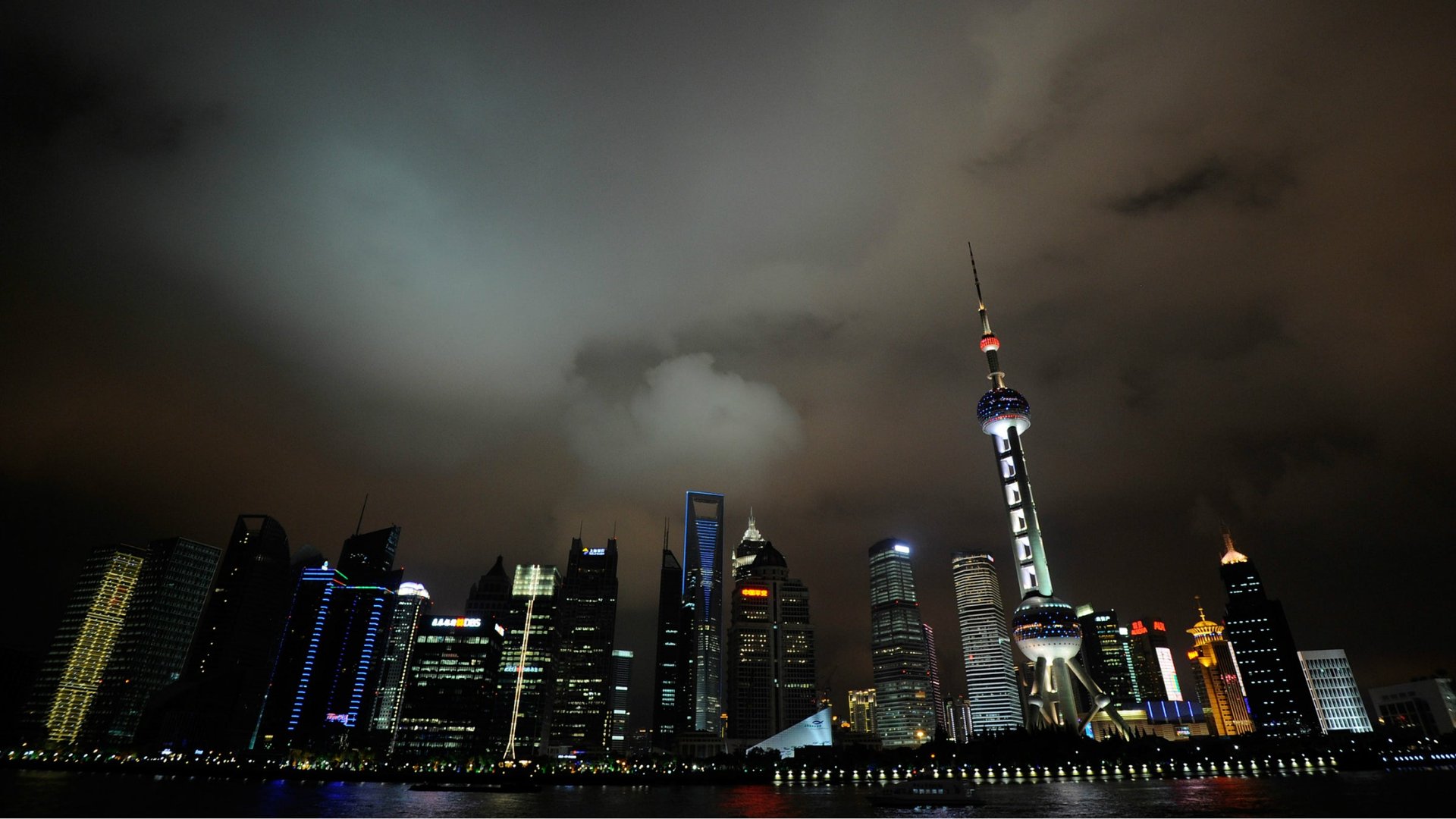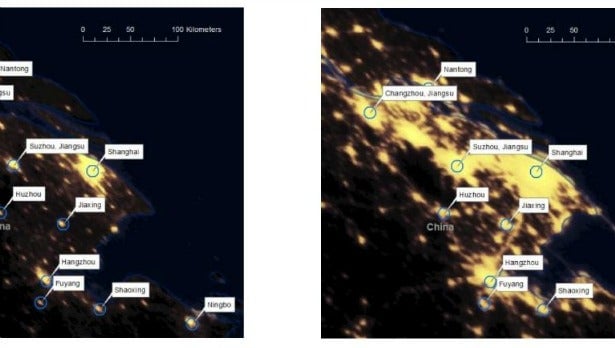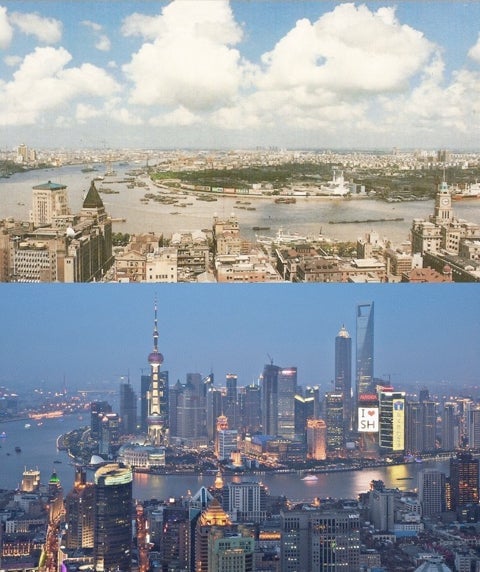These photos reveal how Shanghai’s skyline exploded in just 20 years
Yesterday, Olga Khazan directed our attention to a fascinating satellite image showing the startling difference in Shanghai’s light intensity in the past 20 years. Whereas in 1992 the map revealed just a few specks of light amid a black landscape, the 2009 image showed a vast sea of energy spreading from Shanghai all through the surrounding Yangtze River Delta, a region of tremendous economic productivity in China.


Yesterday, Olga Khazan directed our attention to a fascinating satellite image showing the startling difference in Shanghai’s light intensity in the past 20 years. Whereas in 1992 the map revealed just a few specks of light amid a black landscape, the 2009 image showed a vast sea of energy spreading from Shanghai all through the surrounding Yangtze River Delta, a region of tremendous economic productivity in China.

As great as these images are, a far more terrestrial perspective on Shanghai yields an equally astounding vision. Consider the photograph at the top of this post, of the city’s Pudong Financial District: Pudong’s skyline, with the glittering Oriental Pearl Tower standing apart like a Space Needle on steroids, has already emerged as one of the world’s most distinctive.
In 1990, none of it existed.
Yes, that’s right- less than 25 years ago, the very skyline that enveloped James Bond in Skyfall was simply a glint in Deng Xiaoping’s eye. In 1978, the Chinese leader chose southerly Guangdong Province as his laboratory for economic reform, and while newly-christened Special Economic Zones like Shenzhen raced ahead, Shanghai languished in something of a malaise. Only when new Chinese president Jiang Zemin — himself a former Shanghai party boss — assumed office did the city’s economic fortunes begin to turn. His results, as displayed in the image below (via Catherine Rampell), speak for themselves.

Despite the glitz, Pudong isn’t all that exciting of a place to hang out. Most of Shanghai’s culture, history, and nightlife happens on the other side of the Huangpu River, and many of Shanghai’s residents — both local and foreign — regard Pudong as a soulless ghost town. But the very fact that it exists is a perfect symbol of the vast scale of China’s development.